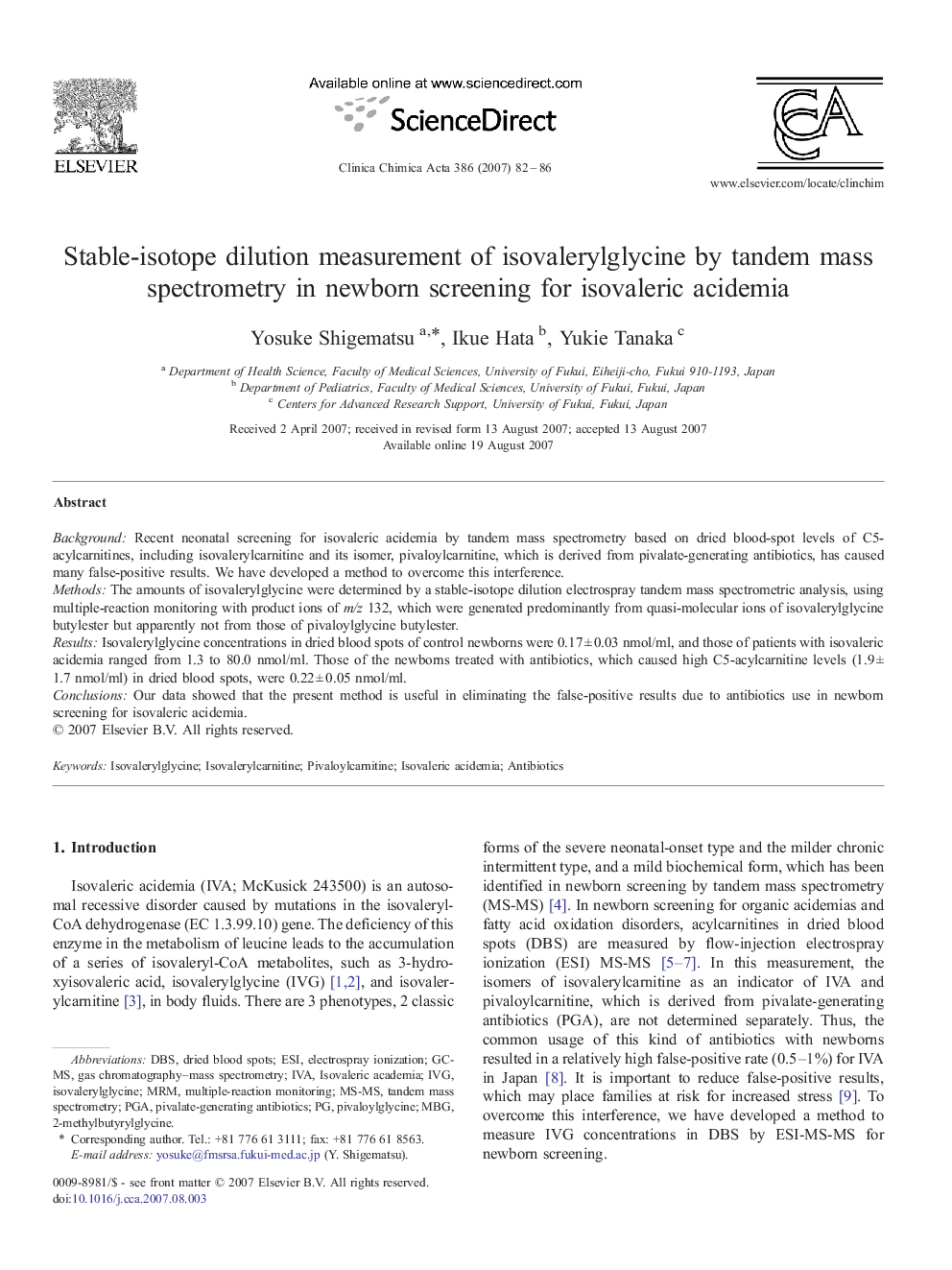| Article ID | Journal | Published Year | Pages | File Type |
|---|---|---|---|---|
| 1967530 | Clinica Chimica Acta | 2007 | 5 Pages |
BackgroundRecent neonatal screening for isovaleric acidemia by tandem mass spectrometry based on dried blood-spot levels of C5-acylcarnitines, including isovalerylcarnitine and its isomer, pivaloylcarnitine, which is derived from pivalate-generating antibiotics, has caused many false-positive results. We have developed a method to overcome this interference.MethodsThe amounts of isovalerylglycine were determined by a stable-isotope dilution electrospray tandem mass spectrometric analysis, using multiple-reaction monitoring with product ions of m/z 132, which were generated predominantly from quasi-molecular ions of isovalerylglycine butylester but apparently not from those of pivaloylglycine butylester.ResultsIsovalerylglycine concentrations in dried blood spots of control newborns were 0.17 ± 0.03 nmol/ml, and those of patients with isovaleric acidemia ranged from 1.3 to 80.0 nmol/ml. Those of the newborns treated with antibiotics, which caused high C5-acylcarnitine levels (1.9 ±1.7 nmol/ml) in dried blood spots, were 0.22 ± 0.05 nmol/ml.ConclusionsOur data showed that the present method is useful in eliminating the false-positive results due to antibiotics use in newborn screening for isovaleric acidemia.
